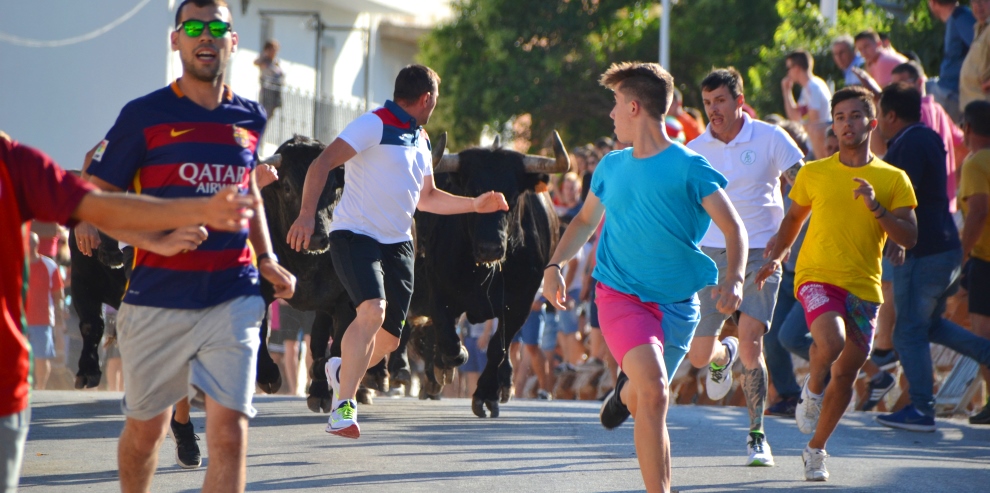
If there was ever any event determined to split opinion, it is the bull-running. It could be regarded as the ‘Marmite’ of fiesta events; you either love it or hate it. For Xàbia, this will be third of four taurino events in the town and all are well-supported. Efforts have been made to change opinion but the small protests by anti-taurino groups continue to fall largely on deaf ears locally and the bull-running remains in the municipality for the foreseeable future.
The first indication of the start of the bull-running festival is the installation of the ‘cadafales’, the large metal cages that surround the arena. On top there is a platform to watch the action from safety whilst below there is usually room for about 20 people who squeeze between the vertical bars. Most, if not all, are privately-owned by families or groups and thus the platform above is usually private so don’t be surprised if you think you’ve secured an excellent position but end up being asked to leave when the owners arrive. On some occasions, you might be welcome to stay and it is quite usual for small kids to be invited up to get a better view as they are not allowed to enter the cage below.
Anyone can squeeze through the bars to get a little closer to the action but you do so at your own risk and you must be very aware of ‘toreros’ barging through the bars to escape the oncoming horns. The cleverer cattle like to charge along the edge of the ‘cadafales’, sometimes running their horns along the bars like a kid with a stick along a metal fence. Most injuries occur through onlookers not concentrating, chatting with their mates or looking in the opposite direction so be very aware.
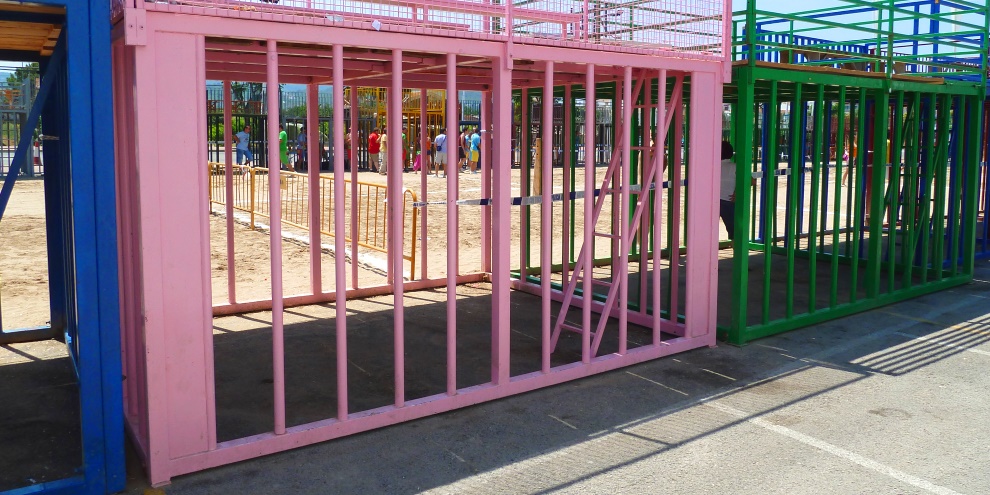
Although you may see some people clutching bottles of beer, drinking is not permitted inside the arena and those who are obviously under the influence are gently led away by the stewards. The ‘toreros’ take the action very seriously indeed and most won’t touch a drop of alcohol until after the event; after all, their very safety depends on them retaining the quick reactions.
At the far end of the arena, there is a large grandstand with public seating for a few hundred people; there is normally no charge to sit there but it is strictly ‘first-come, first-seated’ and in the evenings it is quite usual to be filled to capacity long before the start of proceedings. During the lunch-time sessions, it’s less likely to be full as it gets very hot so remember to take a hat or parasol.
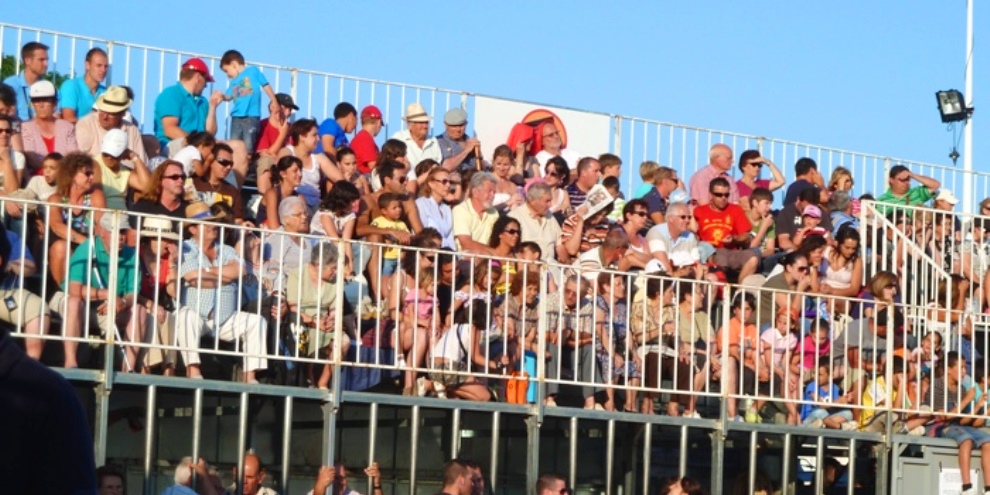
The Fogueres Commission will have created their own bar area from which they will serve drinks and tapas food throughout the bull event as well as the other events that take place in the same area, such as the open-air discos. Some claim that this bar could take anything up to 10,000 euros a day and, if that’s true, then it’s a great boost for the dwindling fiesta funds. Service at the bar can often appear chaotic. The volunteers behind the bar are members of the organising committee and also those of the quintàs celebrating their special anniversaries and are obliged to assist where necessary. The trick to being served is not to be patient and wait for acknowledgement from the server but to be brash, demand service straight away and wave your money in clear view of everyone. Drinks can be taken into the cages but shouldn’t be taken into the arena.
The bull event itself might be seen as an unorganised affair but there is some pattern to the perceived chaos. A rocket is usually released into the air about 30 minutes before the event, releasing a thunderous report that echoes around the town and beyond. This is the first warning that the event is about to begin; another rocket is released with ten minutes to go. Forget the programme for a moment; the rockets are a better indication that the bull-running is about to start.
Every evening, the event begins with the entrance of the animals which is more akin to a bull-running event. Several wooden barriers will have been secured along Calle José Ortega y Gasset; small metal rings have already been cemented firmly into the road surface to which chains or ropes are used to attach the barriers to prevent them moving when people climb on them or the bulls charge into them. At the far end, close to the Vicente Tena school, half a dozen or so cattle are released and they charge down the road, usually with a few braver and younger people running as fast as they can in front of them whilst many more follow on from a safe distance.
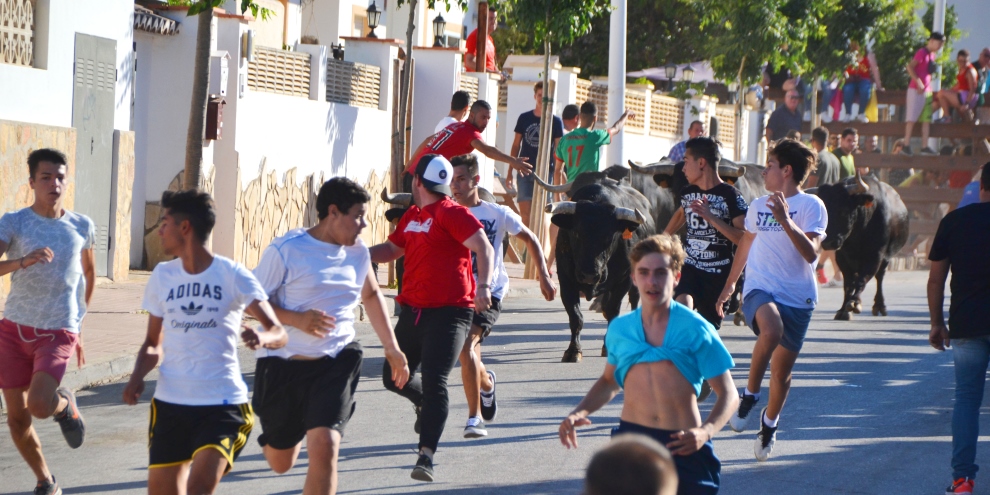
The animals run into the arena, usually welcomed with a cheer from those who have already taken position, complete a circuit to determine an exit point (which is the same way they entered) and then charge back up the road to their release point. This is done perhaps three or four times before they enter the arena for the last time and the gates are slammed shut behind them; some of the wooden barriers are slid up against these gates not only for extra security but to allow spectators to clamber to the top and watch the action unfold.
Inside the arena are a number of obstacles, low platforms and wooden steps which the ‘toreros’ can use to escape the horns if they can’t reach the cages. At one end, at the back of the grandstand, are the corrals where the animals are kept during the event. A loud bang on the door signals that a bull, heifer or cow is about to be released. At first it might seem that it’s just a matter of youngsters milling about the arena, waving at the animal and then diving to safety inside the cages when it charges. However, in most cases, if you look closely at the hands of some of the ‘toreros’, you’ll notice that they will be holding small metal rings, usually with a small length of coloured ribbon attached. Their objective is to get as close to the animal as possible to slide this ring over one of the horns. To do so attracts great applause and further enhances their credibility. Others like to get as close as possible to try and place their palm onto the head of the animal between the horns.
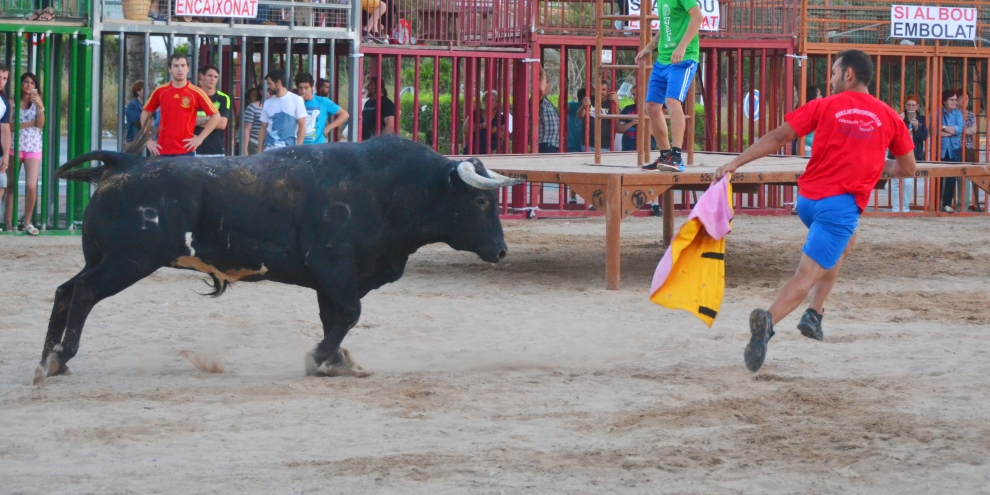
Safety concerns mean that youngsters are not allowed to enter the arena or even enter the cages surrounding it but they don’t need to miss out on the action. The concept of the ‘toros bravos’ is becoming more popular, an exciting version of the bulls event in which half-a-dozen very fit lads push around a number of two-wheeled trolleys on the front of which are attached life-sized paper-maché bulls heads complete with dangerous-looking horns. Some might argue that it desensitizes youngsters against the perceived cruelty of these bull events; others counter that it’s just a bit of fun.
What everyone can agree on is that bull-running will long remain an event that will continue to divide opinion for many years to come.
